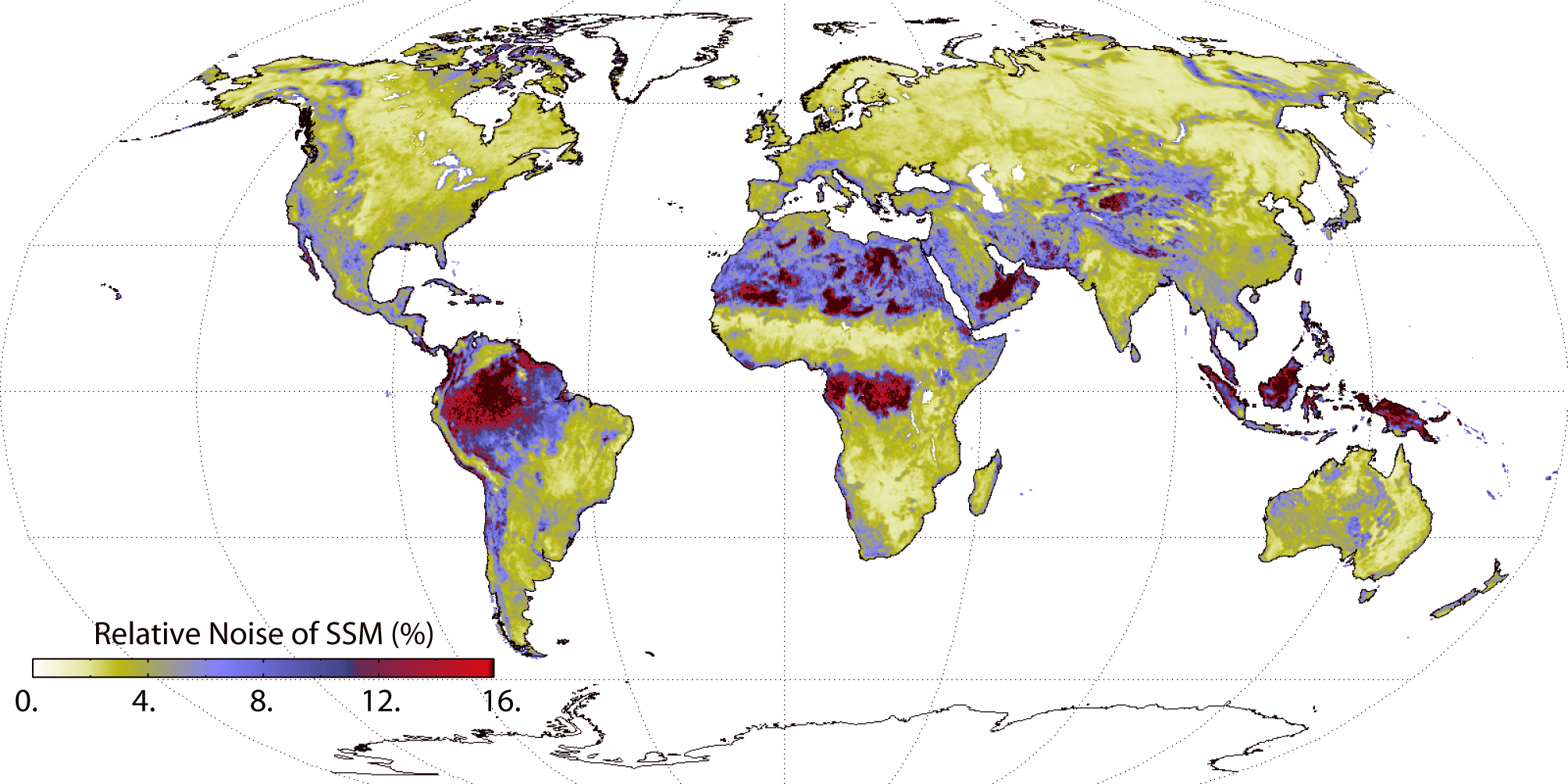Soil Moisture
Lecture 6: Soil Moisture Retrieval

Funded by:


Recapitulation
So far, you have read about...
- Backscatter normalisation, more precisely:
- Azimuth angle normalisation
- Incidence angle normalisation
- Vegetation correction
Coming next...
- the actual soil moisture retrieval

Important assumptions
the relationship between the observed backscatter coefficient in [dB] and the actual soil moisture condition is linear
a long historic time series captures the driest (lowest backscatter, "air dryness") and wettest (highest backscatter, "saturation") possible soil conditions
the soil moisture retrieval approach
The retrieved soil moisture values from the TU-Wien model are commonly expressed as degree of saturation of the soil surface layer.

The crossover angle concept
Estimating the historically driest and wettest soil moisture condition by taking the 2.5% lower/upper backscatter values
the dry reference $\sigma^0_{dry}$ has to be shifted back (extrapolated) to the reference incidence angle of 40 degrees by means of the corresponding slope and curvature functions
this is not necessary for the wet reference, since it is assumed to be 40° (i.e., equal to the wet crossover angle)
Soil Moisture Retrieval
Comparison of the observed normalised backscatter measurements $\sigma(40°,t)$ to the dry ($\sigma^0_{dry}$) and wet ($\sigma^0_{wet}$) reference:
$sm(t)\;=\;\frac{\sigma^0(40,t)\;-\;\sigma^0_{dry}(40,t)}{\sigma^0_{dry}(40,t)\;-\;\sigma^0_{wet}(40,t)}$

Now we've got a soil moisture value!
Individual steps of the TU-Wien model

L1b...Level 1b
DGG...discrete global grid
SCAT seasonal soil moisture dynamics

Where does the retrieval go wrong?
- Low signal-to-noise ratio (known from error propagation)
- Vegetation
- Mountainous regions
- Urban areas
- Where does the model fail?
- Frozen ground
- (Wet) Snow
- Water surfaces
- Dry soil scattering
- Known calibration issues
- Wet correction in arid environments
- Differences in sensor calibration
- Long-term changes in land cover
Low Signal-to-Noise Ratio

Resume of the Retrieval I
The soil moisture retrieval method is a data-based approach:
- Starts from the observations, not from theoretical model considerations
- Nevertheless, the TU Wien method has a solid physical foundation
- Exploits multiple viewing capabilities
- Important for modelling the effect of seasonal vegetation growth and decay (phenology)
- Exploits the availability of long-term data series
- Starts from the observations, not from theoretical model considerations
Resume of the Retrieval II
No external/auxiliary datasets are used for the retrieval
No soil texture, soil type, land cover, biomass, evapotranspiration, brightness temperature…
But raw backscattering signatures in different incidence (viewing) angles